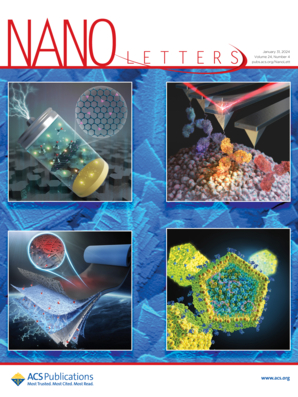Progressive Control of Rashba State on Topological Dirac Semimetal KZnBi
IF 9.6
1区 材料科学
Q1 CHEMISTRY, MULTIDISCIPLINARY
引用次数: 0
Abstract
Rashba states have been actively revisited as a platform for advanced applications such as spintronics and topological quantum computation. Yet, access to the Rashba state is restricted to the specific material sets, and the methodology to control the Rashba state is not established. Here, we report the Rashba states on the (001) surface of KZnBi, a 3D Dirac semimetal. Using angle-resolved photoemission spectroscopy and first-principles calculations, we investigated the evolution of Rashba states under different surface conditions controlled by alkali metal deposition. We observed that restoring surface ordering enables a Rashba state, which is absent in freshly cleaved surfaces. Interestingly, we were able to modify the dispersion of the Rashba state from an ordinary parabolic dispersion to a linearly dispersing Dirac-like state by additional alkali-metal deposition. Our findings provide a methodology for engineering the properties of Rashba states for advanced applications and redefine topological systems as generic hosts of Rashba states.

拓扑狄拉克半金属 KZnBi 上拉什巴态的渐进控制
拉什巴状态作为自旋电子学和拓扑量子计算等先进应用的平台,已被重新积极探讨。然而,进入拉什巴状态仅限于特定的材料组,而且控制拉什巴状态的方法尚未确立。在这里,我们报告了三维狄拉克半金属 KZnBi (001) 表面上的拉什巴态。利用角度分辨光发射光谱和第一原理计算,我们研究了在碱金属沉积控制的不同表面条件下 Rashba 状态的演变。我们观察到,表面有序化的恢复会产生 Rashba 状态,而这种状态在新裂解的表面中是不存在的。有趣的是,通过额外的碱金属沉积,我们能够将拉什巴状态的分散从普通的抛物线分散改变为类似于狄拉克的线性分散状态。我们的发现为先进应用中的拉什巴状态特性工程提供了一种方法,并重新定义了拓扑系统作为拉什巴状态的通用宿主。
本文章由计算机程序翻译,如有差异,请以英文原文为准。
求助全文
约1分钟内获得全文
求助全文
来源期刊

Nano Letters
工程技术-材料科学:综合
CiteScore
16.80
自引率
2.80%
发文量
1182
审稿时长
1.4 months
期刊介绍:
Nano Letters serves as a dynamic platform for promptly disseminating original results in fundamental, applied, and emerging research across all facets of nanoscience and nanotechnology. A pivotal criterion for inclusion within Nano Letters is the convergence of at least two different areas or disciplines, ensuring a rich interdisciplinary scope. The journal is dedicated to fostering exploration in diverse areas, including:
- Experimental and theoretical findings on physical, chemical, and biological phenomena at the nanoscale
- Synthesis, characterization, and processing of organic, inorganic, polymer, and hybrid nanomaterials through physical, chemical, and biological methodologies
- Modeling and simulation of synthetic, assembly, and interaction processes
- Realization of integrated nanostructures and nano-engineered devices exhibiting advanced performance
- Applications of nanoscale materials in living and environmental systems
Nano Letters is committed to advancing and showcasing groundbreaking research that intersects various domains, fostering innovation and collaboration in the ever-evolving field of nanoscience and nanotechnology.
 求助内容:
求助内容: 应助结果提醒方式:
应助结果提醒方式:


